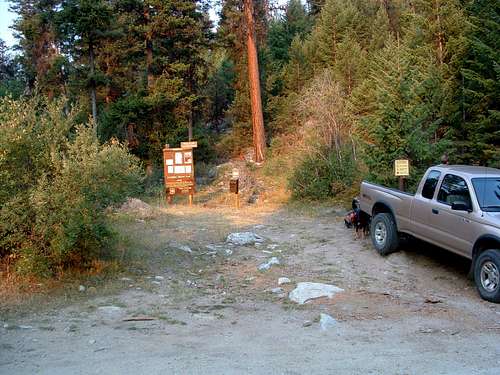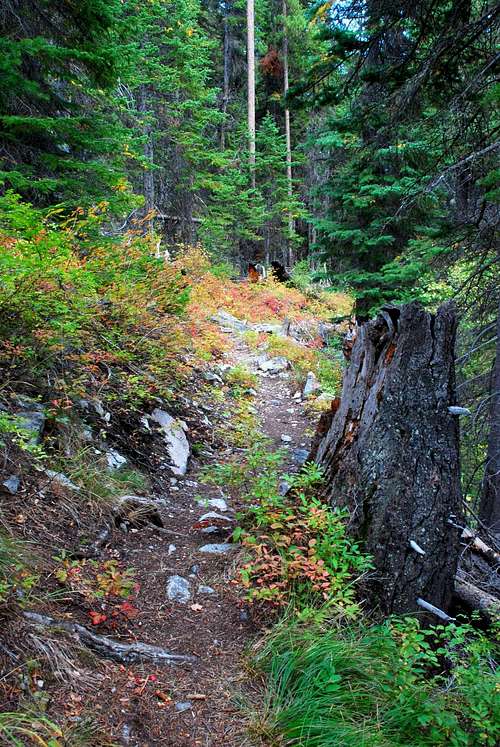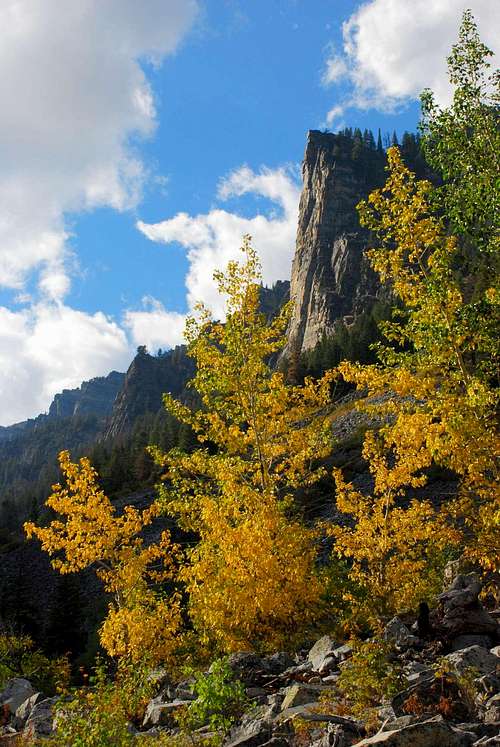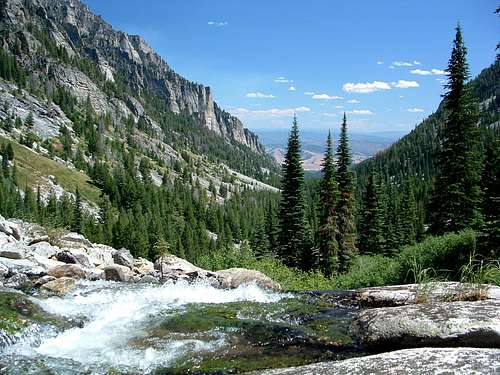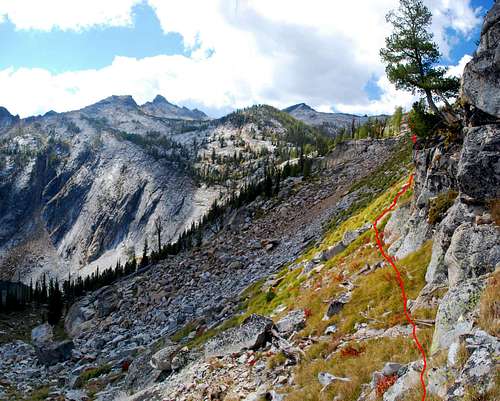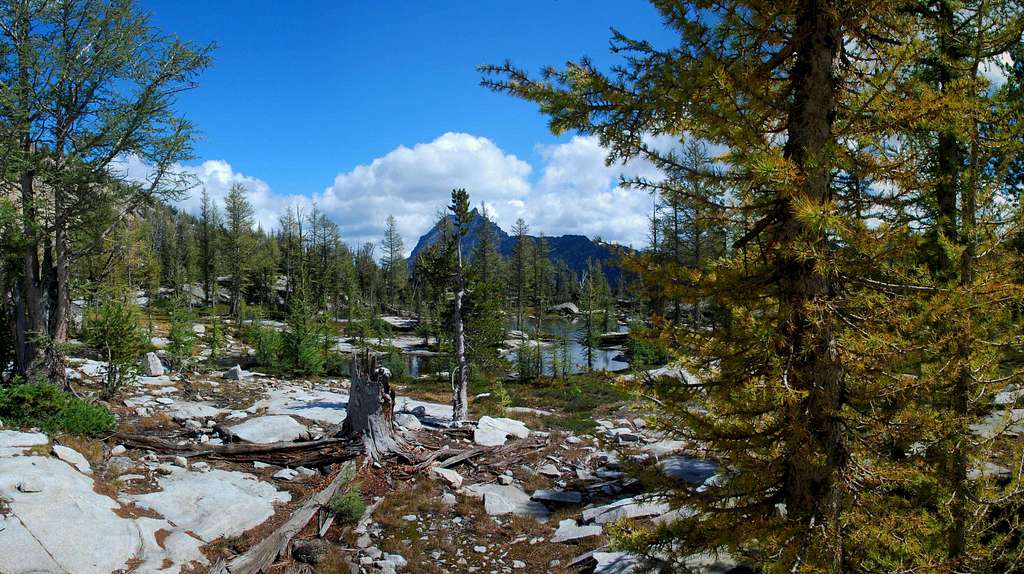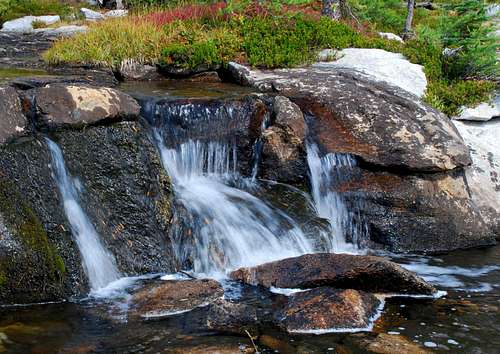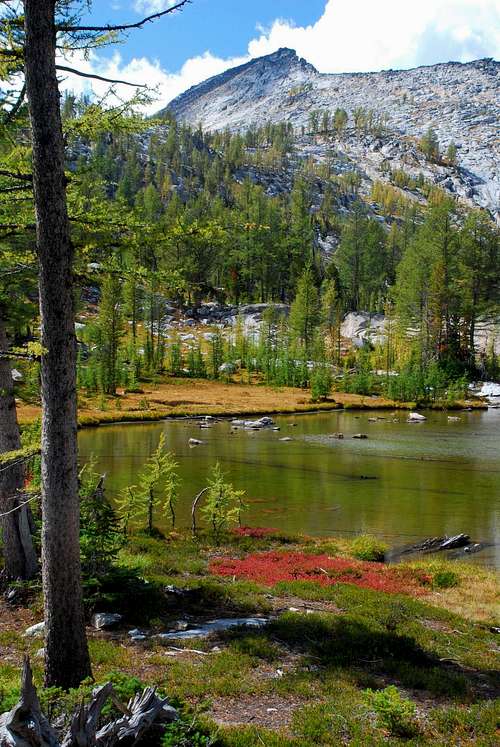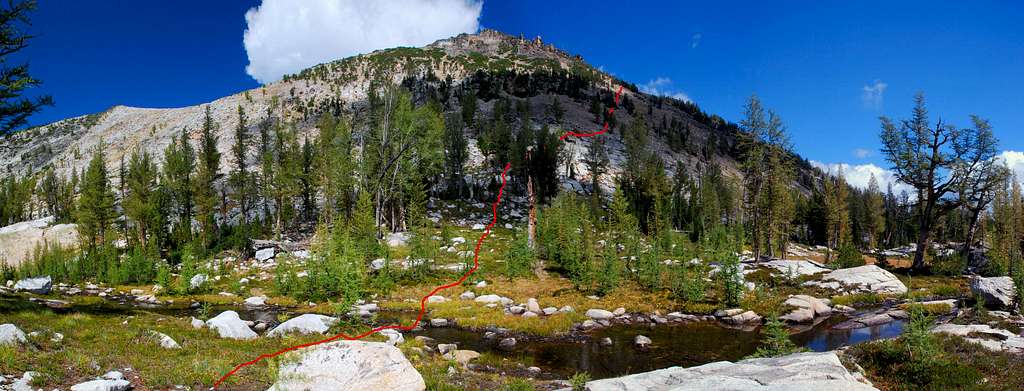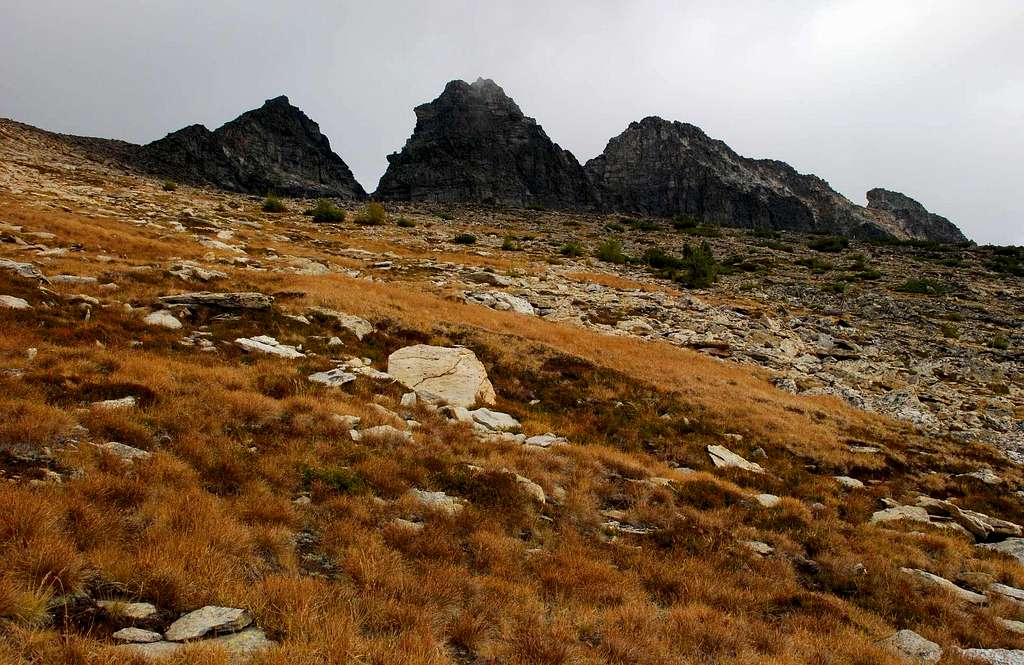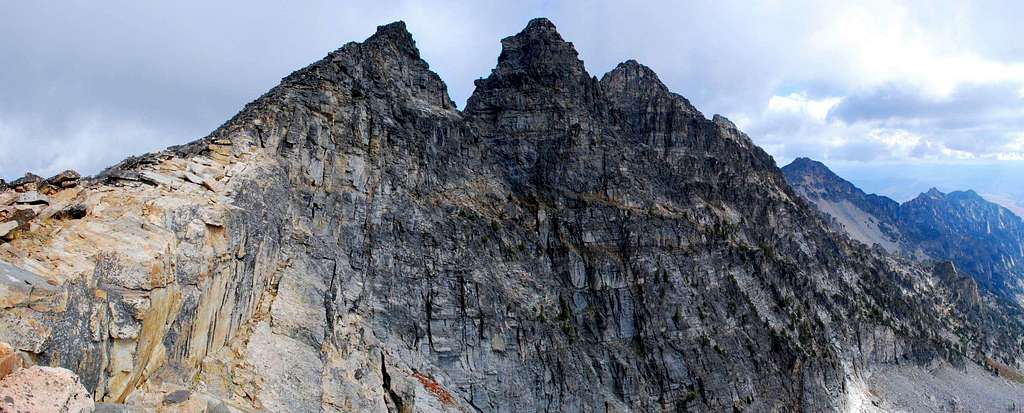-
 10967 Hits
10967 Hits
-
 78.27% Score
78.27% Score
-
 9 Votes
9 Votes
|
|
Route |
|---|---|
|
|
45.95842°N / 114.33598°W |
|
|
Mountaineering, Scrambling, Skiing |
|
|
Spring, Summer, Fall, Winter |
|
|
One to two days |
|
|
Class 3 |
|
|
Very Strenuous |
|
|
I |
|
|
Overview
Route Type – Scramble Class Level – Class 3 Elevation – 9,836’ Gain - 5,217' Distance - 7.9 miles (one way) Length of Time Required to Complete the Route – One or More Days
Almost directly north of Chaffin Lake, The Shard is the highpoint of the ridgeline separating the Chaffin Creek and Tin Cup Drainages. As the ridgeline swings south then east from The Shard, it forms the cirque from which the Chaffin Creek headwaters flow. Chaffin Creek is named for Alex of John S. Chaffin who homesteaded on the creek in 1880. Getting ThereChaffin Creek Trailhead Drive south on Hwy 93 from Darby, MT for about 4.5 miles. Turn right (south) onto the West Fork Road (473). Go only about 100 yards, then turn right (southwest) onto Tin Cup-Chaffin Road (not signed – first road to the right). Continue for about 2.8 miles to an unmarked junction and stay to the right (continuing westward). Drive a little over a mile to the trailhead which is located at a right-turning switchback. The trailhead will be on your left (west). There is limited parking space, though people sometimes just park along the road. There are no restroom facilities. RouteAnyway you look at it, it’s a long way from the trailhead to The Shard. The three routes (listed on SP) range in mileage from 6.8 to 8.1 miles - one way. Because each route requires an elevation gain of about a mile, it makes sense to break the routes into two portions, the approach and the ascent. If you have the stamina to combine them, well, go for it. Otherwise, I suggest establishing a base camp at the end of the approach and getting a night’s rest before tackling the ascent.Approach - Chaffin Creek Trailhead to Chaffin High Lakes From the Chaffin Creek Trailhead, head west through some stately ponderosa pine and douglas fir along a well-used trail. The recently maintained trail stays just north of Chaffin Creek as it makes its way westward along the bottom of the drainage. For the Bitterroot Mountain area this trail is gentle as it gains just over 1,800’ of elevation in the first 4+ miles. Then the fun begins! At about 4.3 miles you will have finished a series of switchbacks up the north side of the drainage and reached an elevation of approximately 6,750’. You will be on a grass-covered moraine just south of and below the largest gully up the north side of the canyon (45.95584 N – 114.30217 W). From this point the trail proceeds downhill for a short distance as it approaches a crossing of Chaffin Creek. This crossing of the creek is on slab granite through the upper portion of a falls and can be extremely dangerous during high water. Be very careful! In fact, if there is high water, your best bet is to go off-trail and climb uphill above the falls along the north side of the stream until you find a safe place to cross. Then backtrack along the south side of the creek until you find the trail. It’s better to walk a little farther than to risk your life. About a mile after the first crossing of Chaffin Creek Falls, and, after crossing it once more, you will reach Hart Lake. Make your way along the north side of the lake on a trail which is not quite as nice as the one which brought you to the lake. As the trail goes around the lake, the route will begin turning in a more southwesterly direction. By this point you should see an obvious ridge which begins near Hart Lake, and, as it rises, goes southwest before curving more directly west. Begin your ascent of this ridge (a mile and a half from Chaffin Creek Falls) on the more gradual incline north (right) of its crest. Ignore any existing trails and pick a line up and over the slab rock. Work your way toward the ridge crest which you should reach at an elevation of around 7,800’. Hike upward, staying close to the crest of the ridge as it begins curving north-northwest. Shortly after reaching 8,200’ (45.94605 N – 114.33355 W), leave the crest and go almost directly west toward the base of some cliff-bands (45.94569 N – 114.33619 W) along the ridge to your right. You want to stay below (to the left) the cliffs until you reach a more gradual incline. You should be close to 8,350’ after passing the cliffs. Note: If, you should be inclined to cover this route in one day, continue climbing at 8,200' (45.94605 N – 114.33355 W), staying close to the ridge-crest as you proceed upward. Rejoin the Climbers' Route at 9,000 feet (45.94855 N – 114.33828 W). Continue traversing toward a low-point (it looks like a very shallow saddle) to the west. This is the entry point to a high cirque containing several small lakes which I call The Chaffin High Lakes. When you attain the saddle (beside an outlet stream) you will be greeted by an open forest of larch and whitebark pine. There are multiple places to set up a base camp for a multi-day summit assault. I consider this Chaffin High Lakes area to have the very best back-country camping in the Bitterroots. Note: Though this spot has more visitors than the Little Tin Cup Cirque (but still very few) there are advantages. The route from trailhead to this destination is longer by almost one and a half miles than the route to Little Tin Cup Cirque, but the amount of elevation gain is spread over a longer distance (2+ miles vs. a half mile) and a bit easier on the legs and lungs. Climbers' Route - West Summit from the Chaffin High Lakes This climbers’ route begins from the Chaffin High Lakes and generally follows a ridge crest north to The Shard. The distance is only .9 mile with a substantial amount of elevation gain and little loss along the way (1,423’ and 36’ respectively – on the ascent). Note: This route will put you on the west summit which is not the highpoint of The Shard. There is a substantial notch between the two summits, which, though not confirmed as of this writing, may require technical climbing skills. Begin by climbing from the area of Chaffin High Lakes in a northeasterly direction just to the right of the crest of a southeast ridge. Your landmark is a rock outcrop on the end of the ridge-crest. Stay to its right (east). As you get close to the crest, swing in a more northerly direction until you reach the ridge crest near 9,000’ (45.94855 N – 114.33828 W). Once attained, cross the crest and head just west of directly north. This line will put you on a wide sloping plateau along the east side of the ridge by the time you reach 9,400' (45.95109 N – 114.33939 W). Change your direction of travel to directly north as you cross the gently sloping plateau. You should re-attain the ridge-crest at 9,600' (45.95405 N – 114.33939 W). From this point it's a simple climb to the summit. The easiest and least exposed line is just west of the crest. With careful route-finding, this portion of the route will be mostly Class 2 with only a little Class 3 climbing required in one or two spots. Much to my surprise, I found this route to have very little exposure, even as I neared the west summit. When To GoThis summit could be visited any time of year. If visiting under heavy snow conditions, an ice axe would be a necessity (crampons may be required) to navigate the portion of the route going up the ridge.I saw no signs of avalanche activity anywhere along this route, but one should always be fully alert when traveling over snow when avalanche conditions are present anywhere in the area. The portion of the route where avalanche activity is most likely on the approach portion, especially where the route reaches the moraine just south of and below the largest gully up the north side of the canyon (45.95584 N – 114.30217 W). Essential GearThe climbers’ route requires rock climbing and boulder hopping, so sturdy shoes or boots are strongly suggested.From the trailhead, it takes a fairly long time to reach the Chaffin High Lakes. Be sure to carry plenty to eat – you’re going to need the fuel. Otherwise, come equipped with "normal" hiking/climbing gear. If you use this route under snow conditions, either snowshoes or skis (with skins) are recommended. Route Statistics
|



